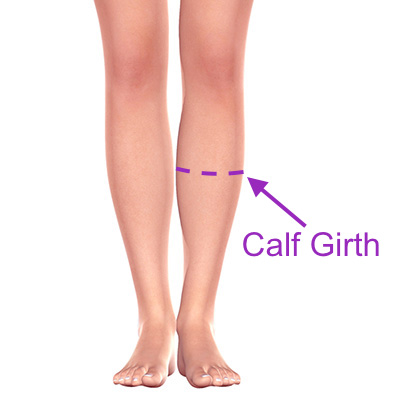Compression socks are special stockings that apply pressure to your legs to improve your blood circulation performance and reduce any legs and feet swelling. They compress the veins in your legs and feet, reducing their diameters and improving the flow of blood back to the heart.
Men wear compression socks for a multitude of reasons, from illness to exercise. Compression socks are versatile and suitable for anyone who needs them regardless of their age.
Looking to Buy a Pair of properly-sized Compression Socks?
Click the button below to see the lineup of ComproGear Compression Socks.
NOTE: The page includes a sizing chart and free returns, so you’re always sure to get the perfect size!
Why Do Men Wear Compression Socks
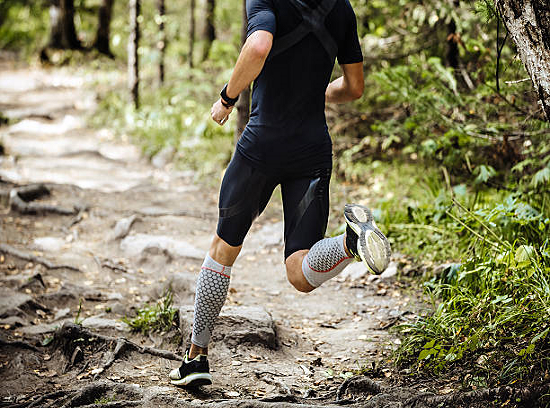
There are several reasons why men wear compression socks to improve health, and they depend mainly on age and lifestyle.
- Sports events and injuries: A lot of athletes wear compression socks during their games and afterward. The socks help them to heal properly and faster, reduce swelling, and improve blood circulation.
- Varicose veins: Varicose veins (spider veins) are pronounced veins that are noticeable on your legs. Poor blood circulation can make the blood pool in the veins, which can swell and become very painful. Compression socks do not actually prevent or cure varicose veins. Rather, they help to lessen the pain and discomfort that accompany varicose veins. They also improve blood circulation and reduce the swelling.
- Deep vein thrombosis/blood clots: The leading cause of deep vein thrombosis (DVT) is the formation of blood clots in the veins. DVT is pretty common, and it can occur in any part of the body, apart from the legs. Wearing compression stockings enhances your blood flow, reduces the pain and swelling of DVT, and helps to prevent more blood clots from forming on the veins again.
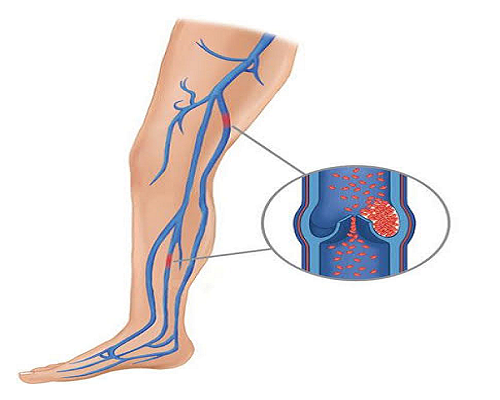
- Edema: Edema is swelling, which is caused when there is an accumulation of fluid in the body. Edema in the legs and feet can be controlled by compression socks, including lymphedema which is more serious.
- Flights: The sudden increase in altitude on selected planes sometimes leads to swollen legs and feet.
Compression socks can reduce the swelling if it is worn correctly. - Diabetes: People with diabetes tend to also suffer from venous insufficiency, DVT, and some kinds of edema. They also suffer from foot ulcers occasionally, and this can happen when little cuts and scratches are not felt because of the numbness that accompanies poor circulation. If the injuries aren’t noticed on time, they turn into ulcers that can lead to severe complications, including death.
Other Reasons For Wearing Compression Stockings
- Post-surgery therapy
- Heavy legs
- Chronic venous insufficiency
- Post-thrombotic syndrome
Types Of Compression Socks
Compression socks come in 3 different categories based on their mode of work. These types also come in various lengths and styles, from ankle socks to waist-high stockings.
Graduated Compression
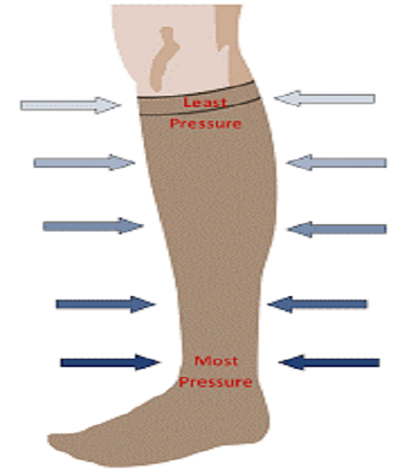
Graduated compression stockings have different levels of compression, ranging from top to bottom. They usually have the strongest compression around the ankles, with the pressure lessening towards the knee.
These types of compression socks are ideal for medical-grade conditions that require strong pressures. They come in various styles, like open-toe, knee-length, thigh-length, and sleeves.
Nonmedical Support Stockings
These are the compression socks that offer lighter pressure than medical-grade socks. You do not require a prescription for them, and they provide light to medium compression and work as excellent support for mild swelling, workouts, and flights.
Also, you can use them as everyday stockings if you are on your feet all day.
Anti-Embolism Stockings
Anti-embolism stockings are usually for patients that are not mobile. They perform similar work as graduated compression stockings, but with a different range of compression. They are tailored to prevent deep vein thrombosis.
How Do I Find The Right Style?
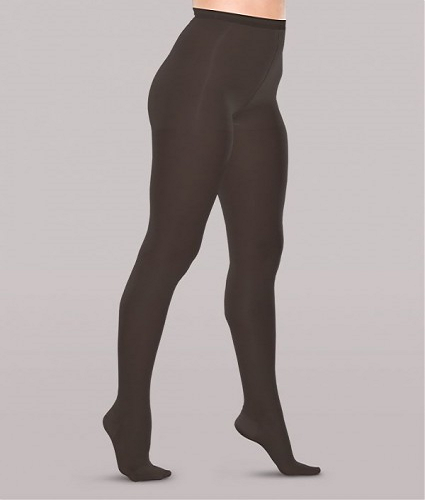
Compression stockings are available in almost every style and color that choosing a style is harder than you think. However, you only have to keep a few things in mind before making your choice.
Firstly, you have to figure out the right compression level you need for whatever reason you need the stockings. Then, you determine the type of socks you need.
Lastly, you can take a pick from the many sock styles that are available in that compression grade and style. You can find a lot of different designs and colors online, with a range of different materials.
Different Compression Levels
Compression socks for men are classified based on how much pressure they apply on your legs. The pressure is measured in mmHg, and one class of socks has a range of about 5-10 mmHg.
Different conditions require different levels of compression, so you should have a dialog with your doctor before you buy any.
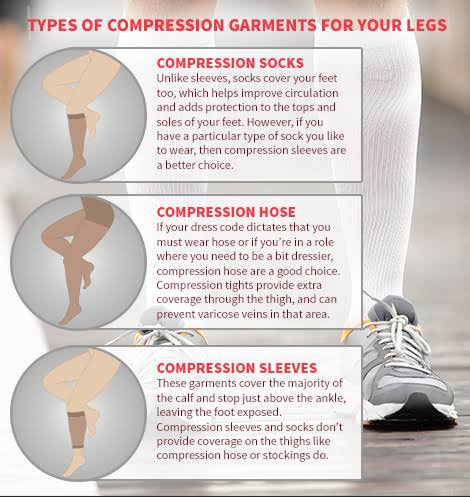
- Mild/Medium Compression: These socks offer the lightest compression for their price. They have a range of 15-20mmHg, and you can easily get them over the counter at a good price with your credit card without a prescription.
They are quite popular among men that work out once in a while because they are suitable for mild swelling, sprains, and pains that can come from severe workouts. You can also wear them on flights to combat any swelling that can happen.
- Firm Compression: These compression stockings are classified as Medical Grade 1 stockings, and they apply 20 to 30 mmHg of pressure. They are more effective for more severe sports wounds and wear during sports competitions.
They are suitable for deep vein thrombosis, severe sports injuries, and varicose veins.
- Extra Firm Compression: Compression socks with 30 to 40 mmHg compression are classified under Medical Grade 2. Theses socks apply a lot more pressure than the previous two, making them a top choice for more severe cases like severe edema, DVT, and varicose veins.
Extra firm compression stockings are also ideal for severe cases of post-thrombotic syndrome and can be used to manage post-surgery treatments. You should have a dialog with your doctor before using these stockings.
- Pharmacy Grade Compression: Pharmacy Grade compression socks currently offer the most compression out of all the grades available. They range from 40 to 50 mmHg. They are useful in treating very severe cases of lymphedema, DVT, and varicose veins. These socks are best used for severe cases, so you have to meet with a doctor to prescribe them for you, for your safety.
Looking to Buy a Pair of properly-sized Compression Socks?
Click the button below to see the lineup of ComproGear Compression Socks.
NOTE: The page includes a sizing chart and free returns, so you’re always sure to get the perfect size!
How To Find The Right Compression Level
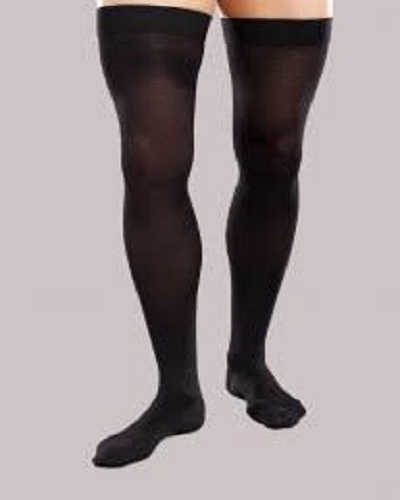
The fastest and most effective way to find the right compression level is to go for a proper consultation with your doctor or healthcare professional.
Although you do not legally require prescriptions for certain compression levels, it is worth repeating that you should consult your doctor first, especially if you need the stockings for a health issue.
How To Wear Compression Socks
Compression socks are similar to regular socks, so you pretty much follow the same procedure for wearing regular socks. The best time to wear your compression socks is early in the morning when your legs are the least swollen.
If you stay too long, your legs can get swollen and alter the fit and size of the socks, thus reducing its effectiveness.

- The first thing for you to do is to make sure your skin is completely dry. Do not wear them when you’re still fresh out of the shower, or after you’ve applied lotion. Also, wear them before you start your workout to avoid sweat.
- Next, find a seat, preferably a high back chair or the edge of your bed, and elevate your legs.
- Then, roll up your selected sock down to the end and place your foot inside. Roll it around until the sock covers your whole foot.
- Then, roll the sock gently back up your leg, checking for wrinkles and runs while doing so. Make sure you keep the pulling effort gentle to avoid creating runs that can reduce the effectiveness of the socks.
- Roll the sock up to the top and repeat the process for the other leg. Then, check both legs to make sure there are no runs in the socks.
- Some aged or disabled people may find this method difficult, which is why you can get a device that helps you wear socks. It is called a stocking donner, and you can easily find one online. You can also try lying down while wearing the socks to make it easier for you.
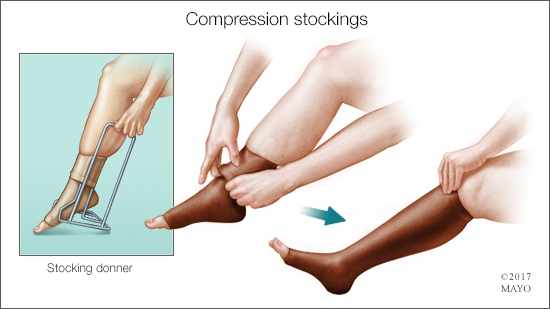
How Long Do I Need to Wear Compression Socks
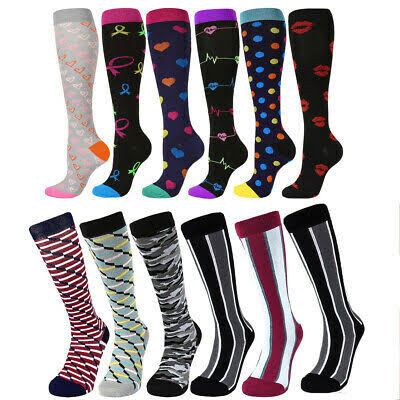
Compression socks are meant to be worn for at least 6 months to a year to correct mild symptoms. If your condition is more severe, you may need to wear them for a couple of years, at least, for them to take effect. The longer you wear them, the faster you will stop needing them.
If you’re wearing them for a health reason, you should wear your compression socks as early as possible and take it off right before bed.
Athletes that wear them during workouts and games can afford to take them off earlier, but only after a few hours; when you’re sure the swelling has gone down.
Finding Your Correct Size
Compression stockings, like other footwear, come in different sizes. These range from petite to plus size compression pantyhose. Wearing the wrong size reduces the effectiveness of the compression. For men, they are usually the same as their shoe size.
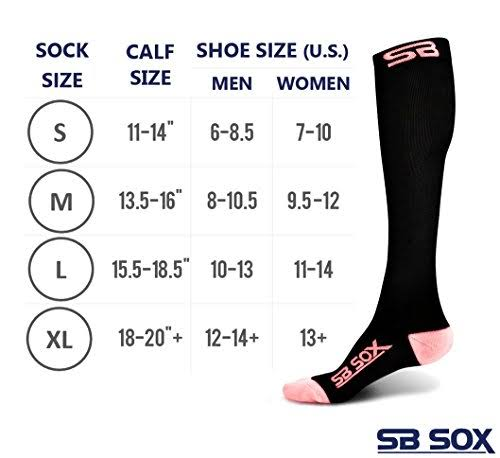
A better option is to go to a professional to get your legs measured. Most men prefer doing this, mainly because it leaves less room for mistakes. Note that the best time to get fitted for compression socks is early in the morning before your feet get a chance to swell up.
Also, note that you can go a size larger or smaller, depending on how much pressure you want. If you need a bit more pressure without getting a higher grade of socks, you can pick a pair that is one size smaller.
Also, men with large feet sizes and wide ankles can go for a bigger size, especially if you have to wear socks for a long time.
Other Popular Articles on ComproGear
Rose Toy Red Rose Vibrator
What Happens When Your Compression Socks Are Too Tight?
Wearing compression stockings that are too tight are not only really uncomfortable, but they can also be harmful. There is a condition called senile purpura that can occur if a person consistently wears compression socks that are too tight. It causes breakage of the tiny blood vessels that are directly under the skin, causing bleeding under the skin and pain.
While this condition is age-dependent, it is easy to reverse. All you have to do is visit the doctor to get proper sizing and prescription. The condition becomes better after wearing the correct stockings for some time.
How To Tell If Your Compression Socks Are Too Tight
It can be a bit challenging to know if your selected compression socks are too tight because people have different reactions and responses to pain and discomfort. Only the wearer can correctly identify when a pair of compression socks are too tight, as long as they recognize the following signs:
- Pinching and squeezing of the skin
- Numb legs and toes
- Pain and discomfort
- Discoloration of the feet
If you experience any of the following symptoms, then you may be wearing the wrong compression socks. The first step you should take is to go back and ensure that you are wearing the correct size.
You can also go to a professional to get refitted for a new pair that fits you better. Even if you already have your measurements, it doesn’t hurt to get a second opinion – especially if sufficient time has passed between measurements.
Compression Stockings For Sports
Athletes are some of the most frequent users of compression socks, and some of them can’t participate without them. Athletes of all calibers wear compression socks, especially during their serious games.
If you’re a sports fan, you must have noticed those colorful socks and calf sleeves footballers, basketball players, and track racers wear. Those are usually compression socks. They have good reviews, and they are believed to enhance athletic performance.

A school of thought claims that compression socks compress the tissues in the legs together, creating less vibration, which in turn reduces the amount of energy spent during an athletic event. So far, there hasn’t been enough evidence to back it up.
However, most athletes that use compression socks wear them for their role in improving recovery time after events.
Compression socks have been proven to delay muscle soreness after intense sports. The advantage of reduced muscle soreness is enough for athletes to keep using them.
How To Find A Good Pair Of Socks For Sports Use
Recently, the conditions and requirements for athletic compression stockings have changed due to innovation. Good quality athletic stockings will cost you a high price, but for the benefits, you stand to gain, it is worth it.
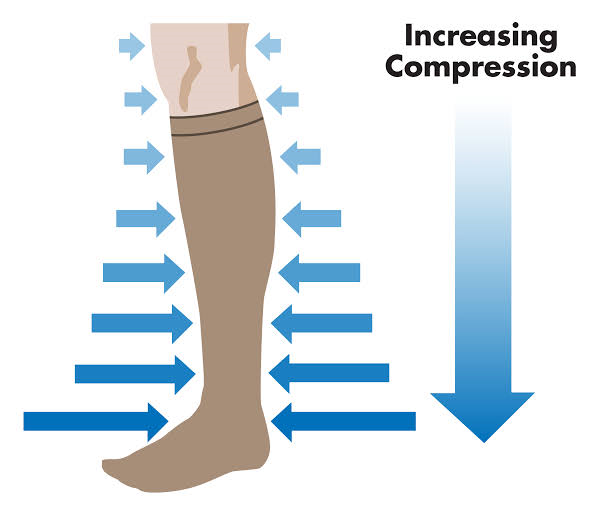
- Graduated compression: Compression stockings that are graduated are more comfortable to wear, and they will benefit you more in the long run. They apply diminishing levels of compressions towards your knees, and this helps to improve the flow of blood.
- Compression level: The best compression range for sports is anything from mild to firm compression. For socks 20 to 30 mmHg is sufficient. Do not go higher, except it is prescribed.
- Material: Ensure that the stockings are made from a breathable material that doesn’t hold on to sweat.
- Length: Go for a pair of socks that are long enough to cover your ankles to your calves comfortably. You can also go for sleeves if you prefer.
Compression Sleeves: What Are They?
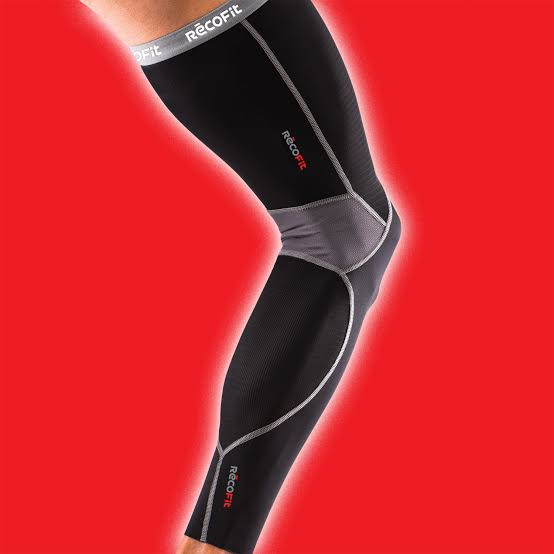
Compression sleeves are a type of compression wear that resembles compression socks without the foot part.
They allow your feet to breathe and are very popular among athletes, especially during workouts.
Compression sleeves target your calves specifically and are useful for any swelling that doesn’t affect the feet.
Side Effects Of Wearing Compression Socks

As helpful as compression socks are, if you’re not careful when wearing them, or you wear them wrongly, you can have any of the following side effects:
- Numb and tingling feet
- Joint and knee pains
- Poor or little blood circulation
- Corns and lumps on your ankles
- Sore feet
- Itchiness
- Dry and brittle skin
Benefits Of Compression Socks
- Improves circulation in your legs
- Provides venous support
- Prevents blood clots and pooling in your legs
- Helps reduce swelling
- Relieves pain caused by DVT, swelling, and varicose veins
- Prevents growth of DVT and venous ulcers in your legs
Looking to Buy a Pair of properly-sized Compression Socks?
Click the button below to see the lineup of ComproGear Compression Socks.
NOTE: The page includes a sizing chart and free returns, so you’re always sure to get the perfect size!
Careers That Need Compression Socks
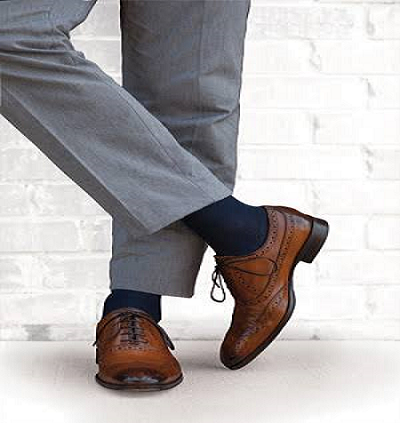
Many professions require you to be on your feet all day, which can cause a lot of weight to rest on your feet. This pressure can cause some complications, which can become severe if it isn’t managed on time.
Wearing compression socks in these career paths can help to control any swelling that can occur.
- Desk jobs
- Healthcare professionals
- Manufacturing jobs
- Construction workers
- Sales staff
- Hospitality staff
- Flight attendant
- Professional drivers
Tips On Wearing Compression Socks

- Change them often: Compression socks lose their effectiveness over time, so you should change your socks as often as possible. Some experts say changing them every 6 months and getting new pairs keeps them tight and maintains adequate pressure.
- Do not pull on them: Compression socks are delicate and easily prone to runs. Make sure you use a gentle touch when wearing and handling them to avoid runs.
- Wear them for as long as possible: When you have a condition that needs to be corrected with compression socks, make sure to wear them for as long as possible. You need consistent pressure to treat your condition as fast as possible.
- Protect them with footwear: Wear footwear over your compression socks the same as you would wear regular socks, so they are not open to damage.
- Hand wash only: A machine wash can ruin your stockings permanently, so make sure you wash them with your hands and some warm water.
- Get a professional fit: A professional fitter will give you an accurate size, so you don’t get socks that are too tight and cause pain, or too loose to even work.
- Always have a backup: It is advisable for you to always have a spare pair of compression socks in case of an emergency. Especially when your main pair has been washed, so you can maintain consistent pressure on your legs.
FAQs On Compression Socks
Q. Can I cut off the feet of my compression socks?
A. Cutting off the feet from your compression socks can cause the sock to roll up and become uncomfortable to wear. If you don’t like the feeling of the feet, try using a compression sleeve that leaves your feet open.
Q. What happens when I sleep in compression socks?
A. Sleeping in your compression socks is not advisable, even though some athletes claim that it helps them before a competition. Compression socks work against the action of gravity on your legs by pushing your blood up towards your heart.
Now, when sleeping, you remain in a horizontal position for hours, which means that gravity doesn’t have the same effect on your legs anymore. This means that the pressure applied by compression socks can cut off your circulation.
However, some people need to sleep in compression socks after some surgeries, or because of a health matter, and so they wear the mildest compression socks.
Q. How old do I have to be to use compression socks?
A. There is no age limit to wearing compression socks, even when it pertains to children. In fact, children get a lot of benefits from wearing compression socks for working out and travel. Compression socks can also help children on the autism spectrum who may have problems with touch.
Q. Can I wear a medical-grade compression sock all day?
A. Yes, you can. Medical grade compression socks come in 3 levels of compression, with the least level having a range of 20 to 30 mmHg. If you need your compression socks to combat swelling, and other medical conditions, you can wear it all day. Wearing it all day gives you the best results and reduces the time you would need to wear them.
Conclusion
Men have been wearing compression socks for a long time, and these stockings are quite versatile. Even though they aren’t proven to enhance athletic performance, there are a million other reasons for you to wear them.
One thing to note is that compression socks are delicate, and they require the gentlest of care. Anything can cause them to run or tear, and that interferes with the efficiency of the socks. But, as long as you follow the rules outlined in this article, you will not have a problem.
Looking to Buy a Pair of properly-sized Compression Socks?
Click the button below to see the lineup of ComproGear Compression Socks.
NOTE: The page includes a sizing chart and free returns, so you’re always sure to get the perfect size!
This page last updated June 8, 2022
